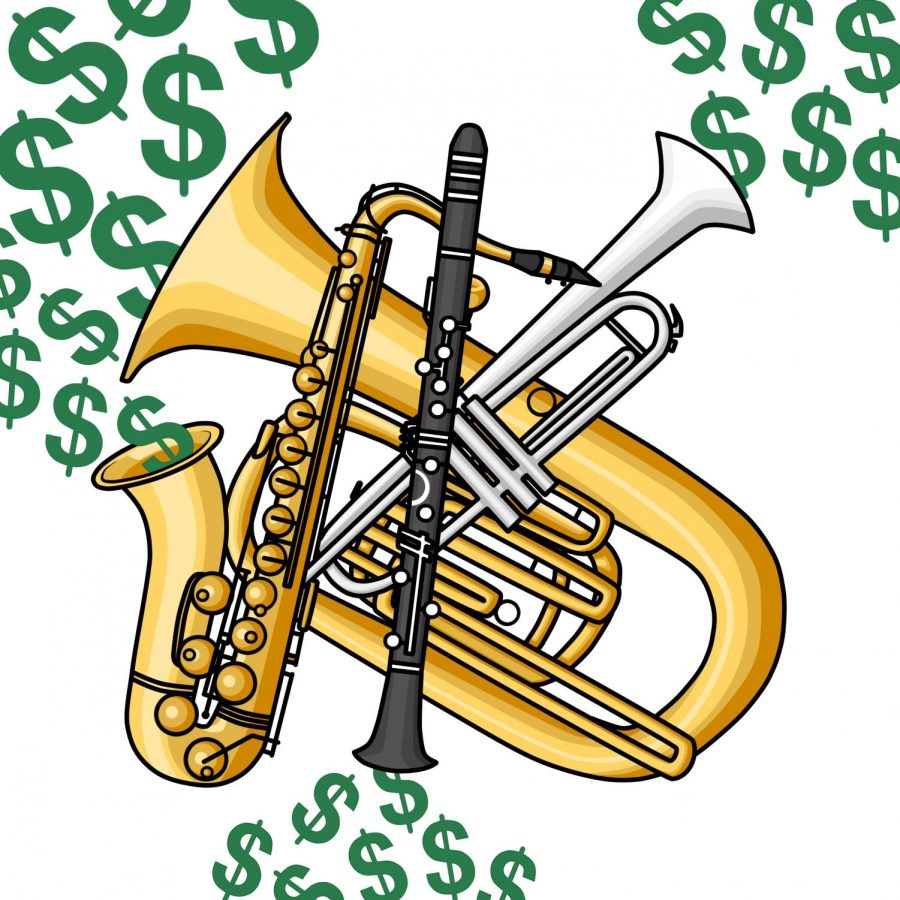The “extra” in extracurricular
Are these activities worth all the additional costs and fees?
March 26, 2019
Extracurriculars: most college applications would look empty without them. They’re excellent outlets for students to explore interests, make friends, and show off their work ethic. But membership in different activities can come with hefty fees. In sports especially, student athletes might find themselves shelling out hundreds of dollars for equipment.
According to Forbes, many families in the US spend upwards of $1,000 a year on their students’ non-academic activities. In Edina, where most students are juggling a million things at once, that should come as no surprise.
Edina offers many extracurriculars, from sports teams to STEM clubs to groups dedicated to trying foreign foods. New organizations are added every year, yet the well-established ones like Student Council, Model UN and most of the athletic teams maintain a steady level of popularity among the student body. Almost all students are a member of at least one activity, if not multiple, both affiliated with the school and not. The fees for organizations at the school vary widely, from no money to $300.
The EHS music program is one of the most beloved activities at the school. Junior Alyssa Corder, a member of Varsity band, marching band, and jazz band, said, “I’d say the amount someone pays for band a year really varies. It really depends on how much effort and how involved you are in band. Because if you just take the band class, it’s really not that expensive compared to someone that’s in a lot of band activities.”
The Greater Twin Cities Youth Symphonies (GTCYS) and Minnesota Youth Symphonies (MYS) are two of the most popular classical music organizations available to students outside of EHS, and tuition is hundreds of dollars, although significant financial aid is available.
At EHS, any band student in 10th grade or above is also required to be in marching band. Sophomores pay an $85 entry fee and juniors and seniors pay $45. Corder estimates that she spends around $800 a year on band, which includes private lessons, and she sees nothing wrong with current fees.“I think a lot of the fees that required are fair. And I think the amount you spend for band outside of school can be adjusted to fit your liking,” Corder said.
Of course, no one can ignore the formidable athletics program at EHS. Even so, some students opt to go elsewhere for athletic extracurriculars. A sport that has recently gained popularity among student athletes at EHS, despite not being an activity affiliated with EHS, is rowing. Twin Cities Youth Rowing, an external rowing club, runs for the entire year and many EHS students are part of it. The annual club fee is $60, and members don’t have to pay for equipment, only appropriate clothing.
A student who prefers to remain anonymous said, “The annual club fee seemed unnecessary but [it] was paid. It covers the rowing tank [top] that we wear when we race at regattas.” While this student did not receive financial aid, it is available.
Financial aid exists at EHS as well. Students on free or reduced lunch can register for a club or team with the fee waived and students are not barred from activities for not being able to afford them. In addition, Edina Give and Go, a booster organization, helps students who can’t pay for certain pieces of equipment.
EHS Activities Director Troy Stein has noticed that fees have been increasing for certain athletic teams, due to the fact that many team parents and captains are trying to pad up team activities. “This includes team meals before competitions, cool gear to wear, snacks for road trips, videos for post-season banquets…This adds to the stress and sometimes financial commitment for students in a program,” Stein said. “I often wonder when it is going to be enough.”
This fall, Mr. Stein suggested cutting down on some of these programs to these parents, but there is no hard policy limiting them. As of now, students will have to pay the fees as they are, or take advantage of the financial aid options.
Many are willing to face those hurdles. “For me personally, band is one of the best investments that my family has made for me,” Corder said. “I’ve made so many friends because of band, friendships and experiences that will last a lifetime for me. I wouldn’t trade it for anything.”




